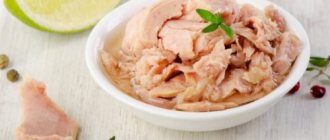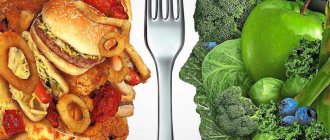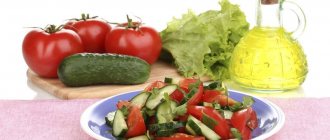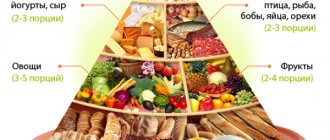Seeds
Seeds are tiny nutritional powerhouses. Some contain calcium, such as poppy seeds, sesame seeds, celery and chia seeds.
For example, 1 tablespoon (15 grams) of poppy seeds contains 126 mg, or 13% of the RDA for calcium ().
The seeds also contain proteins and healthy fats. For example, chia seeds are a rich source of plant-based omega-3 fatty acids ().
1 tablespoon of sesame seeds contains 9% of the RDA for calcium. Sesame also contains other minerals including copper, iron and manganese ().
Summary:
Several types of seeds are good sources of calcium. For example, 1 tablespoon of poppy seeds contains 13% of the RDA for this mineral.
Cheese
The list of foods high in calcium includes various types of cheese.
Most cheeses are excellent sources of calcium. Parmesan cheese contains the most calcium - 1184 mg (118% of the RDI) per 100 grams ().
Softer cheeses contain less of this mineral. 100 grams of brie cheese contains only 184 mg (18% of the RDI) calcium. Many other types of cheese perform averagely, providing approximately 70% of the RDI per 100 grams (, ).
It's also worth noting that the calcium present in dairy products is more easily absorbed by your body than when it comes from plant sources.
Many types of cheese are also rich in protein, such as cottage cheese. Aged hard cheeses contain little lactose, making them more suitable for people with lactose intolerance.
In addition, dairy products also have some health benefits. Recent research suggests that dairy products may reduce the risk of developing cardiovascular disease ().
Another study found that eating cheese daily was associated with a lower risk of developing metabolic syndrome, which increases the risk of heart disease, stroke and type 2 diabetes ().
However, remember that full-fat cheese is high in fat and calories. Most cheeses are also high in sodium, which some people are sensitive to.
Read more about the benefits and harms of cheese here - Cheese: benefits and harms for the human body.
Summary:
100 grams of Parmesan cheese provides the human body with 118% of the RDA for calcium. Although cheese is high in fat and calories, eating it may actually reduce your risk of developing heart disease.
Foods containing large amounts of calcium
To find out which foods contain a lot of calcium, you should use tables with categories such as dairy, legumes, nuts and vegetables, with which you can expand your daily diet and replenish the lack of the mineral in the body.
Dairy
Dairy products are considered an ideal source of calcium, which is quickly absorbed in the presence of lactose (milk sugar) and low fat content, for example, skim milk and cottage cheese, as well as low-fat cheeses.
Cottage cheese and low-fat hard cheese are leaders among foods high in calcium, as well as sources of proteins, healthy fats, carotene, B vitamins and minerals. For example, Parmesan (32% fat), Dutch (45% fat).
A glass of skim cow's milk provides the body with 30% of the daily calcium requirement (306 mg). Goat's milk is close in composition to cow's milk, but contains 15-20% more calcium and 1.5 times more magnesium. Goat milk contains a lot of carotene, ascorbic acid, iron, magnesium, healthy amino acids and fats.
| Products | Ca (mg) per 100 g |
| Milk, 3% | 119 |
| Powdered milk | 912 |
| Goat milk | 131 |
| Yogurt | 120 |
| Acidophilus | 125 |
| Kefir | 130 |
| Curdled milk | 118 |
| Ryazhenka | 113 |
| Sour cream | 141 |
| Cottage cheese | 950 |
| Hard cheese | 1200 |
| Brynza | 600 |
| Milk serum | 103 |
Vegetables
Calcium is found primarily in green leafy vegetables such as parsley, cabbage, spinach, basil, and broccoli.
Basil, both fresh and dried, differs from other vegetables in its large amount of calcium, as well as the presence of mineral, essential, tannins and acids. The benefits of basil include a beneficial effect on the functioning of the nervous, cardiovascular and skeletal systems.
| Products | Ca (mg) per 100 g |
| Basil | 370 |
| Parsley | 245 |
| Olives | 96 |
| White cabbage | 210 |
| Kale | 150 |
| Broccoli | 105 |
| Green onion | 98 |
| Garlic | 181 |
| Stewed spinach | 141 |
| Sun-dried tomatoes | 110 |
| Arugula | 160 |
Nuts and seeds
Seeds and nuts are foods rich in calcium, as well as protein, fats (Omega 3), copper, iron and manganese, and are beneficial for heart disease, bone disease, and insulin resistance.
Poppy seeds are high in calcium, manganese, chromium, copper, proteins, polyunsaturated fatty acids and vitamins C, E, D, K and group B. Poppy prevents demineralization of bone tissue and tooth decay, and also promotes bone restoration after fractures.
| Products | Ca (mg) per 100 g |
| Sesame | 900 |
| Poppy | 1450 |
| Cashew | 290 |
| Almond | 250 |
| Pine nuts | 250 |
| Brazilian nut | 160 |
| Pistachios | 130 |
| Hazelnut | 123 |
| Sunflower seeds | 100 |
| Caraway | 789 |
| Mustard seeds | 266 |
| Mustard seeds | 245 |
| Flax seeds | 255 |
Seafood
Canned fish has a high percentage of calcium, phosphorus, B vitamins and complete fatty acids due to the content of bones, which soften during processing and become suitable for consumption.
Canned sardines contain 550 mg of calcium per 100 grams, which makes it possible to replenish half of the body's daily needs. Canned sardines contain iron, zinc, manganese, copper, selenium and phosphorus.
| Products | Ca (mg) per 100 g |
| Salmon | 450 |
| Sardine | 550 |
| Zander | 507 |
| Anchovies | 232 |
| Raw seaweed | 168 |
| Spirulina powder | 120 |
| Cuttlefish | 180 |
| Octopus | 106 |
| Crab | 96 |
Legumes
The list of foods containing large amounts of calcium includes legumes (beans, lentils, soybeans), which are also rich in magnesium, potassium, phosphorus, iron and vitamin A. This combination of nutrients improves heart function and strengthens bones.
Soy in the form of tofu, soy cheese, milk, etc. will help prevent the destruction and decrease in bone density in older people, the development of heart disease, increased cholesterol and slow down the aging of cells.
| Products | Ca (mg) per 100 g |
| Soy protein | 369 |
| Soy cheese | 242 |
| Soya beans | 102 |
| Soy flour | 206 |
| French green beans | 190 |
| White beans | 240 |
| Soy milk | 140 |
| Mash | 132 |
| Peanut flour | 130 |
| Cocoa | 125 |
Yogurt
Yogurt is an excellent source of calcium. Many types of yogurt are also rich in live probiotic bacteria, which have many health benefits.
One cup (245 grams) of regular yogurt contains 30% of the RDA for calcium. It also contains vitamin B2, phosphorus, potassium and vitamin B12 ().
Low-fat yogurt may contain even more calcium—about 45% of the RDA in one cup ().
While Greek yogurt is an excellent source of protein in your diet, it provides less calcium than regular yogurt ().
One study linked eating yogurt to improved overall diet quality and improved metabolic health. Subjects who consumed yogurt had lower risks of developing metabolic diseases such as type 2 diabetes and cardiovascular disease ().
Read more about the benefits of yogurt here - Yogurt: benefits and harm to the body.
Summary:
Yogurt is one of the best sources of calcium, providing the human body with 30% of the RDA for calcium per cup. It is also a good source of protein and other nutrients.
Canned salmon and sardines
Canned sardines and salmon are calcium-rich foods thanks to their edible bones. 100 grams of canned sardines provides the body with 38% of the RDI, and 100 grams of canned salmon with bones provides us with 25% of the RDI (,).
These fatty fish also provide high-quality protein and omega-3 fatty acids, which are good for the heart, brain, and skin (,).
While seafood may contain mercury, small fish such as sardines have low levels of this harmful substance. Not only that, both sardines and salmon have high levels of selenium, a mineral that can counteract mercury toxicity ().
Summary:
Canned sardines and salmon are very healthy choices. A 240 gram can of sardines supplies our body with calcium at 91% of the RDA.
Legumes
Legumes such as beans and lentils contain significant amounts of fiber, protein and micronutrients. They also boast high amounts of iron, zinc, folic acid, magnesium and potassium. Some varieties are also rich in calcium.
Winged beans have the highest amount of calcium among legumes. A 200 gram serving of cooked winged beans contains 184 mg of calcium, which is 18% of the RDI ().
White beans are also a good source of calcium - a 200g serving of cooked white beans contains 146mg of this mineral, which is 14% of the RDI. Other beans and lentils contain lower amounts of this mineral - 4-6% of the RDI per serving (, ,).
Research shows that legumes may help lower LDL cholesterol ("bad cholesterol") and reduce the risk of developing type 2 diabetes ().
Summary:
Legumes are highly nutritious, and one 200 gram serving of cooked winged beans provides 24% of the RDA for calcium.
Almond
Among all nuts, almonds are the richest in calcium. Just 100 g of almonds contain 266 mg of calcium, which is 27% of the RDI ().
This same amount of almonds also provides almost 12 grams of fiber, as well as healthy fats and protein. These nuts are an excellent source of magnesium, manganese and vitamin E.
Eating nuts may help lower blood pressure, reduce body fat and other risk factors for metabolic diseases ().
You can learn more about the beneficial properties of almonds on this page - Almonds: benefits and harm for the human body.
Summary:
Almonds contain a large amount of nutrients such as healthy fats, protein, magnesium and others. Eating just 100 grams of almonds provides our body with 27% of the RDA for calcium.
Whey Protein
Whey protein is found in milk, and its health benefits are currently being widely studied. It is an excellent source of protein that is full of quickly digestible amino acids.
In several studies, researchers have linked whey protein intake to weight loss and improved blood sugar control ().
Whey is also extremely rich in calcium. One 28-gram scoop of whey protein isolate powder contains 200 mg of calcium, which is 20% of the RDI ().
Summary:
Whey protein is an exceptionally healthy source of protein. A scoop of whey protein powder contains 20% of the RDA for calcium.
Some leafy vegetables
Dark leafy vegetables are incredibly healthy, and some of them are also high-calcium foods. Calcium-rich dark green leafy vegetables include various types of cabbage, greens (parsley, dill) and spinach.
For example, a 250-gram serving of cooked dark green leafy vegetables contains 350 mg of calcium, which is 35% of the RDI (RDA).
Please note that some varieties contain high levels of oxalates. These are natural compounds that bind to calcium, making some of it unavailable to your body.
Spinach is one such food. Therefore, despite the high calcium content of spinach, it is less available than that found in low-oxalate vegetables such as kale and leafy greens.
Summary:
Some dark leafy vegetables and greens are rich in calcium. One 250 gram serving of cooked leafy vegetables provides 35% of your daily requirement.
Authorized Products
Calcium-rich foods included in the diet:
- Milk and fermented milk products: cottage cheese, kefir, fermented baked milk, cheeses, sour cream. Moreover, the higher their fat content, the lower the microelement content. It is believed that to meet the requirement for this micronutrient, you need to consume more than three servings of dairy products daily.
- One serving is considered to be 30 g of cheese, 200 ml of milk (kefir, yogurt), 100 g of cottage cheese, 150 g of yogurt.
- If a person consumes only 1-2 servings, it is necessary to ensure that 600 mg of calcium is taken in the form of the drug. If not consumed at all, then 1200 mg in tablet form.
- Soy and soy products (milk, yogurt, tofu).
- Fish, seafood (especially shrimp), canned fish (sardines in oil, sprats, pink salmon), sprat, anchovy.
- Vegetables - lentils, peas, chickpeas, mung beans, beans, dill, parsley, green onions, lettuce, celery, olives, garlic, red and white cabbage, broccoli. They are best consumed fresh.
- Dried fruits (dried apricots, figs, persimmons, raisins, prunes, dates) can be used as a snack, added to all fruit salads and cottage cheese, or consumed with kefir.
- Seeds and sunflower seeds (sesame seeds, pumpkin seeds and sunflower seeds) and nuts (hazelnuts, pistachios, walnuts, almonds).
- Of all grains, rice has the highest calcium content, but this does not mean that you should only eat it.
Using the table above, you can create a daily diet with a complete content of this microelement.
Table of permitted products
| Proteins, g | Fats, g | Carbohydrates, g | Calories, kcal | |
Vegetables and greens | ||||
| vegetables legumes | 9,1 | 1,6 | 27,0 | 168 |
| zucchini | 0,6 | 0,3 | 4,6 | 24 |
| Brussels sprouts | 4,8 | 0,0 | 8,0 | 43 |
| sauerkraut | 1,8 | 0,1 | 4,4 | 19 |
| cauliflower | 2,5 | 0,3 | 5,4 | 30 |
| bulb onions | 1,4 | 0,0 | 10,4 | 41 |
| carrot | 1,3 | 0,1 | 6,9 | 32 |
| cucumbers | 0,8 | 0,1 | 2,8 | 15 |
| pickles | 0,8 | 0,1 | 1,7 | 11 |
| beet | 1,5 | 0,1 | 8,8 | 40 |
| celery | 0,9 | 0,1 | 2,1 | 12 |
| tomatoes | 0,6 | 0,2 | 4,2 | 20 |
| pumpkin | 1,3 | 0,3 | 7,7 | 28 |
| garlic | 6,5 | 0,5 | 29,9 | 143 |
Fruits | ||||
| apricots | 0,9 | 0,1 | 10,8 | 41 |
| avocado | 2,0 | 20,0 | 7,4 | 208 |
| oranges | 0,9 | 0,2 | 8,1 | 36 |
| watermelon | 0,6 | 0,1 | 5,8 | 25 |
| bananas | 1,5 | 0,2 | 21,8 | 95 |
| pears | 0,4 | 0,3 | 10,9 | 42 |
| melon | 0,6 | 0,3 | 7,4 | 33 |
| lime | 0,9 | 0,1 | 3,0 | 16 |
| lemons | 0,9 | 0,1 | 3,0 | 16 |
| tangerines | 0,8 | 0,2 | 7,5 | 33 |
| plums | 0,8 | 0,3 | 9,6 | 42 |
| persimmon | 0,5 | 0,3 | 15,3 | 66 |
| apples | 0,4 | 0,4 | 9,8 | 47 |
Berries | ||||
| cowberry | 0,7 | 0,5 | 9,6 | 43 |
| grape | 0,6 | 0,2 | 16,8 | 65 |
| strawberry | 0,8 | 0,4 | 7,5 | 41 |
| cranberry | 0,5 | 0,0 | 6,8 | 26 |
| sea buckthorn | 1,2 | 5,4 | 5,7 | 82 |
| currant | 1,0 | 0,4 | 7,5 | 43 |
| rose hip | 1,6 | 0,0 | 14,0 | 51 |
Nuts and dried fruits | ||||
| raisin | 2,9 | 0,6 | 66,0 | 264 |
| dried apricots | 5,2 | 0,3 | 51,0 | 215 |
| dates | 2,5 | 0,5 | 69,2 | 274 |
| prunes | 2,3 | 0,7 | 57,5 | 231 |
Cereals and porridges | ||||
| buckwheat (kernel) | 12,6 | 3,3 | 62,1 | 313 |
| cereals | 11,9 | 7,2 | 69,3 | 366 |
| corn grits | 8,3 | 1,2 | 75,0 | 337 |
| pearl barley | 9,3 | 1,1 | 73,7 | 320 |
| millet cereal | 11,5 | 3,3 | 69,3 | 348 |
| white rice | 6,7 | 0,7 | 78,9 | 344 |
| barley grits | 10,4 | 1,3 | 66,3 | 324 |
Raw materials and seasonings | ||||
| honey | 0,8 | 0,0 | 81,5 | 329 |
| milk sauce | 2,0 | 7,1 | 5,2 | 84 |
| sour cream sauce | 1,9 | 5,7 | 5,2 | 78 |
Dairy | ||||
| milk 1.5% | 2,8 | 1,5 | 4,7 | 44 |
| kefir 1% | 2,8 | 1,0 | 4,0 | 40 |
| sour cream 15% (low fat) | 2,6 | 15,0 | 3,0 | 158 |
| curdled milk | 2,9 | 2,5 | 4,1 | 53 |
| acidophilus | 2,8 | 3,2 | 3,8 | 57 |
| yogurt | 4,3 | 2,0 | 6,2 | 60 |
Cheeses and cottage cheese | ||||
| cottage cheese 0.6% (low fat) | 18,0 | 0,6 | 1,8 | 88 |
Meat products | ||||
| boiled beef | 25,8 | 16,8 | 0,0 | 254 |
| boiled veal | 30,7 | 0,9 | 0,0 | 131 |
| rabbit | 21,0 | 8,0 | 0,0 | 156 |
Bird | ||||
| boiled chicken | 25,2 | 7,4 | 0,0 | 170 |
| turkey | 19,2 | 0,7 | 0,0 | 84 |
Eggs | ||||
| chicken eggs | 12,7 | 10,9 | 0,7 | 157 |
Fish and seafood | ||||
| dried fish | 17,5 | 4,6 | 0,0 | 139 |
| smoked fish | 26,8 | 9,9 | 0,0 | 196 |
| canned fish | 17,5 | 2,0 | 0,0 | 88 |
Oils and fats | ||||
| corn oil | 0,0 | 99,9 | 0,0 | 899 |
| linseed oil | 0,0 | 99,8 | 0,0 | 898 |
| olive oil | 0,0 | 99,8 | 0,0 | 898 |
| sunflower oil | 0,0 | 99,9 | 0,0 | 899 |
| ghee | 0,2 | 99,0 | 0,0 | 892 |
Non-alcoholic drinks | ||||
| mineral water | 0,0 | 0,0 | 0,0 | — |
| lingonberry juice | 0,1 | 0,0 | 10,7 | 41 |
| green tea | 0,0 | 0,0 | 0,0 | — |
Juices and compotes | ||||
| apricot juice | 0,9 | 0,1 | 9,0 | 38 |
| carrot juice | 1,1 | 0,1 | 6,4 | 28 |
| pumpkin juice | 0,0 | 0,0 | 9,0 | 38 |
| rose hip juice | 0,1 | 0,0 | 17,6 | 70 |
| * data is per 100 g of product | ||||
Rhubarb
Rhubarb contains high amounts of fiber, vitamin K, calcium and smaller amounts of other vitamins and minerals. It contains prebiotic fiber, which can promote the development of beneficial bacteria in the gut ().
Both spinach and rhubarb are high in oxalates, so much of the calcium is not absorbed. One study showed that our body is able to absorb only a quarter of the total amount of this mineral present in rhubarb ().
On the other hand, the amount of calcium in rhubarb is quite high. So even if you only absorb a quarter, that would be 90mg per 250g serving of cooked rhubarb ().
You can learn more about the beneficial properties of rhubarb on this page - Rhubarb: benefits and harm to the body.
Summary:
Rhubarb is high in fiber, vitamin K and other nutrients. The calcium contained in rhubarb may not be completely absorbed, but despite this you still get a significant amount of it.
Why else do you need calcium?
Before we get into the calcium content tables in foods, the body needs calcium not only for healthy bones and teeth, but also for:
- Contractions of all muscles, including the heart. When a nerve stimulates a muscle to contract, calcium is released to help proteins in the muscle perform that contraction.
- Nerve signal transmission. Calcium helps carry messages between the brain and every part of the body.
- Normal functioning of blood vessels and blood clotting.
- Releases many hormones and enzymes that affect almost every function in the human body.
If the body does not have enough calcium to perform all these functions, then it begins to take it from the “reserve”, which is our bones and teeth. Therefore, diseases of the teeth and bones are a sure sign of insufficient intake of calcium or vitamin D. The latter, in turn, plays an important role in the absorption of calcium itself (read on “Forest Fairy”, where foods contain vitamin D).
Fortified products
Another way to get enough calcium is to eat foods fortified with this mineral. Some grains can contain up to 1,000 mg of calcium (100% of the RDA) per serving, and that doesn't include added milk.
However, keep in mind that your body cannot absorb all of this calcium at once, and it is best to spread your intake over several servings and consume it throughout the day ().
Flour and cornmeal can also be fortified with calcium. That's why some breads, tortillas, and crackers contain high amounts of this mineral.
Summary:
Grain-based foods can be fortified with calcium. Read labels to find out how much calcium is in fortified foods.
Calcium in foods of animal origin. Tables of contents per 100 g.
After cheese, canned fish is the best animal source of calcium, largely due to the fact that it is consumed together with bones. Fatty fish (herring, pike perch, perch, etc.), fish roe and seafood, in addition to calcium, will also provide your body with high-quality protein and healthy fats. However, seafood should not be overused, since it contains quite a lot of mercury.
Which fish has more calcium?
Table 3. Calcium in food: fish and seafood
Calcium in meat: beef, pork and poultry
Red meat contains the most calcium, especially beef and veal. The amount of mg of calcium per 100g may vary slightly depending on which part you choose for lunch. Also, the numbers can be influenced by the age of the animal, the degree of its fat content and in what conditions it was raised. The table below shows averages for the three most common types of meat products on the market.
How much calcium is in chicken eggs? Table of contents per 100 g
Another animal source of calcium in food is eggs. In fact, only egg yolks and powdered eggs contain large amounts of calcium. Eating two scrambled eggs for breakfast will only give you about 60 mg of calcium.
Amaranth
Amaranth is an incredibly nutritious pseudograin that is a good source of folic acid and is very rich in several minerals, including manganese, magnesium, phosphorus and iron.
A 250 gram serving of cooked amaranth provides your body with 117 mg of calcium, which is 12% of the RDI ().
Amaranth leaves contain even more calcium - a 130 gram serving of cooked amaranth leaves contains 275 mg of calcium, which is 28% of the RDI. The leaves also contain very high amounts of vitamins A and C ().
Summary:
Amaranth seeds and leaves are very nutritious. A 250 gram serving of boiled amaranth seeds provides the human body with calcium at 12% of the RDI.
Edamame and Tofu
Foods that contain large amounts of calcium include edamame and tofu.
Edamame is soybeans in a pod. One 150 gram serving of edamame contains 10% of the RDA for calcium. This popular Japanese snack is also a good source of protein and meets your daily requirement of folic acid ().
Tofu with added calcium sulfate also has exceptionally high amounts of this mineral. You can get 86% of the RDI by consuming just half a bowl (126 g) of this product ().
Summary:
Tofu and edamame are rich in calcium. Just half a bowl of tofu cooked with calcium sulfate has 86% of the RDI.
Calcium and vitamin D
The body needs vitamin D to absorb calcium-containing foods in the small intestine.
Vitamin D prevents the development of osteoporosis, rickets, periodontal disease, rheumatism, and is necessary for blood clotting, tissue growth, smooth functioning of the heart, and the health of the nervous system.
Up to 90% of vitamin D is synthesized by the skin under the influence of the sun. Natural synthesis is hampered by fear of sunbathing and intensive use of sunscreens. Sunbathing is necessary, but only in places with clean air, when the concentration of ultraviolet radiation is maximum - in the morning or evening.
Eliminating vitamin D deficiency with food and synthetic vitamins requires the body to do some work. Therefore, it is difficult to assert the usefulness of this approach. Moreover, sometimes taking foods artificially fortified with vitamin D provokes the deposition of calcium salts.
Vitamin D is rich in fish oil, cod or halibut liver, Atlantic herring, mackerel, tuna, mackerel, raw egg yolk, cheese, cottage cheese, butter, as well as pork, beef, fish or poultry liver.
Fortified drinks
Even if you don't drink milk, you can still get calcium from fortified non-dairy drinks. A cup of fortified soy milk has 30% of the RDA for calcium. Soy milk contains 7 g of protein, making it very similar to traditional cow's milk ().
Other nut and seed based milks may be fortified with even higher levels of calcium. However, it is not only plant-based dairy products that are fortified. Orange juice can also be fortified, providing your body with up to 50% of the RDA for calcium per glass ().
Summary:
Plant-based milk and orange juice can be fortified with calcium. A cup of fortified orange juice can provide your body with half your daily calcium requirement.
Which vegetables contain a lot of calcium?
Vegetables will provide the body with the necessary elements much more effectively:
- garlic – 181
- parsley – 240
- celery – 40-42
- boiled spinach – 136
- white cabbage, red cabbage – 40-48
- kohlrabi, Brussels sprouts, broccoli – 36-40
- Chinese cabbage – 77
- leeks – 59 raw, 30 – boiled
- sorrel – 44
- beans – 153
- lentils – 108
The amount in vegetables is indicated per 100 g of product.
This list is by no means complete, these are only the most common vegetables high in calcium .
Figs
Dried figs are rich in antioxidants and fiber. Compared to other dried fruits, it also contains more calcium. In fact, 100g of dried figs contains 162g of calcium, which is 16% of the RDI ().
In addition, figs also provide the body with a decent amount of potassium and vitamin K.
Summary:
Dried figs contain more calcium than other dried fruits. When you consume 100 g of dry figs, you get 16% of the daily value of this mineral.
You can learn more about the beneficial properties of figs on this page - Figs: benefits and harm to the body.
Milk
Cow's milk is one of the best and cheapest sources of calcium. One cup (250 ml) of cow's milk contains 276-352 mg of calcium, depending on whether the milk is whole or skim. Calcium in dairy products is also well absorbed (,).
In addition, milk is a good source of protein, vitamin A and vitamin D.
Goat's milk is another excellent source of calcium, providing your body with 327 mg per cup ().
Summary:
Milk is an excellent source of highly absorbable calcium. A cup of milk provides the human body with 27 - 35% of the daily requirement of this mineral.
Daily value for children, adults
Calcium-containing foods (tables with the proportion of calcium in foods are listed below) should be consumed in doses of 0.8 g (adults). If a woman is pregnant, her norm per day cannot be less than 1 g, and so the norm differs for different categories of people.
The need for an element increases when:
- pregnancy and breastfeeding;
- increased sweating;
- working with harmful substances (for example, fertilizers and chemical compounds);
- active lifestyle and playing sports at least 3 times a week or professionally.
Distinctions on calcium intake for different groups of people:
| Groups of people | Daily requirement depending on age |
| Women |
|
| Pregnancy and lactation |
|
| Men |
|
| Children under one year old |
|
| Children over 11 months |
|
Calcium-containing foods (a table indicating the amount of calcium in food will help avoid excess) are important for the full and proper functioning of the body.
But a high content of the element in the body can cause the appearance of:
- neoplasms;
- dizziness;
- severe weakness.
There are many foods available to people that will help meet their daily calcium requirement.
Summarize
Calcium is an important mineral that you may not be getting enough from your diet.
While dairy products tend to have the highest levels of calcium, there are also many other good plant foods that contain this mineral in high quantities.
You can easily meet your calcium needs by eating foods from this varied list.
Tags: Calcium
- Related Posts
- Top 12 Foods Containing Lean Protein
- 12 foods containing large amounts of phosphorus
- Bodybuilding Meal Plan: What to Eat and What Not to Eat
« Previous entry
Preservation and absorption of calcium in the body: rules of use
Calcium (containing foods and a table of rich foods are listed below), even if it is taken according to the norm, cannot guarantee sufficient saturation of the body, since it is not able to be completely absorbed. And in order for it to be assimilated as much as possible, you need to know several interesting facts.
The absorbed proportion of calcium will increase:
- when taken simultaneously with vitamin D;
- with sufficient sun exposure;
- with an increase in the menu of foods rich in vitamin D (eggs, sardines).
Phosphorus and magnesium help calcium absorption. The permissible value of phosphorus is 1.4 times less than calcium.
The optimal ratio of these 3 vitamins is:
- cottage cheese;
- greenery;
- legumes
Some foods and microelements, on the contrary, remove calcium from tissues, so their consumption should be reduced or removed from the diet completely. For example, rhubarb, coffee - due to the content of oxalic acid. It forms oxalates (insoluble salts), which settle in the discs between the vertebrae and in the bones.
To increase the proportion of calcium absorbed, it is necessary to restore the correct acidity of the stomach. Problems in the functioning of the gastrointestinal tract can occur for various reasons - surgical interventions, taking medications. A normal level of acidity allows for proper absorption of calcium in the intestines.
In order for calcium to be absorbed well, there must be coordinated work of the hormonal system: the production of growth hormone, estrogen and others.
Problems in the functioning of the pancreas, kidneys and liver reduce the absorption of calcium. They help break down and absorb the element (calcium comes in foods in the form of compounds). Also, some drugs, for example, laxatives, diuretics, are often to blame for the improper absorption of the element.
Increased physical activity contributes to the loss of calcium: it “leaks” with sweat secretions. After playing sports, you need to restore calcium, for example, drink 250 ml of low-fat dairy product. Stressful situations also contribute to the active excretion of calcium, as cortisol is produced. It affects the activity of microelement excretion by the kidneys.
The percentage of calcium absorbed is determined by what chemical composition a person consumes and when. So calcium citrate (preferred) does not depend on food intake, carbonate should be taken with meals.
Lemon: benefits and harm for the human body
Discussion: 8 comments
- Marina:
02/01/2018 at 22:00Milk is simply a must-have if you care about the optimal amount of elements in your body. It is also important that the protein is correct, A2. It is well absorbed and does not give side effects. So far I’ve only seen milk like this at Sloboda’s.
Answer
Const:
10/17/2018 at 02:50
Milk is a harmful and wasteful swill for humans. This is food for a herd of stupid people
Answer
- Lola:
12/15/2019 at 04:56
what is a must-have? what are side effects? some barrels? Can you speak Russian?
Answer
10.21.2018 at 19:11
Thank you for the article!
Answer
02/27/2019 at 10:39
Thank you
Answer
05/30/2019 at 09:04
Then drink beer, it's watering, I think it's more suitable for you dude.
Answer
07/10/2019 at 07:44
Milk is for suckers, Beer is for fools. Eat green vegetables - your health will be praised!
Answer
08/28/2019 at 02:57
You described the calcium content in natural products. And most of our products are counterfeit chemicals containing palm oil, GMOs, pesticides, antibiotics, etc.
Answer
Signs of excess
Excessive intake increases the excitability of the nervous system, dehydrates connective tissue cells, and reduces their functionality.
An increased calcium content in the body provokes the development of urolithiasis, deposits of calcium and magnesium salts, and increases the concentration of uric acid salts (urates). Deposits in the joint area, increased concentration of salt in cartilage are the cause of the development of gout and impaired mobility.
When calcium levels increase, it is useful to drink distilled or “soft” water, which contains a minimum of macronutrients. It rinses and dissolves excess minerals. The course of hydrotherapy is two months.











